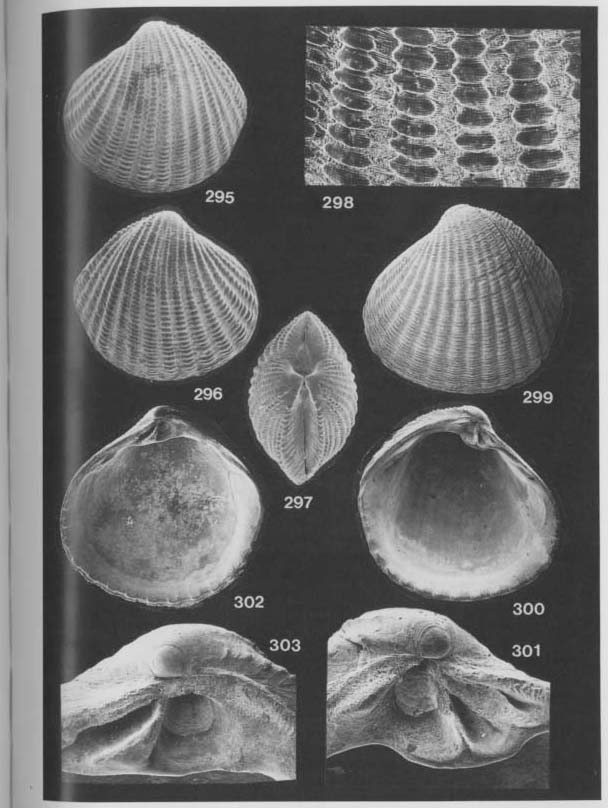Systematic Description
Carditella shimojiensis sp. nov.
|
  |
Type and material.— Holotype: RM19527a, a living specimen, from the bottom sediments of "Fool's Palace" of Shimoji Islet, Miyako Islands. Paratypes: RM 19527 (living) from the type locality, RM19528 (dead) from "Black Hole", RM19609 (dead) from "Toriike" of Shimoji Islet.
Diagnosis.— Small-sized cryptic species of Carditella, characterized by subovate outline, large triangular resilium below umbo, opisthoclinal cardinal teeth, and about 18 radial costae which are somewhat finer on posterior area.
Description.— Shell small, rarely exceeding 3.3 mm in length, subovate in outline, white, pink or yellow (probably due to polymorphism) when alive, slightly longer than high, moderately inflated. Umbo prosogyrous, contiguous, located near mid-length of shell. Antero-dorsal margin long, nearly straight; postero-dorsal margin feebly convex, turning abruptly to posterior margin. Lunule and escutcheon distinct, not ornamented. Surface covered with 16-19 broad radial costae, which become somewhat finer on posterior area and are marked with numerous densely spaced commarginal lamellae. Ventral margin coarsely crenulated in accordance with radial costae. On early dissoconch two radials scaly and more prominent than others, corresponding to small posterior and escutcheon carinae, though the prominence becomes insignificant with growth. Resilium unusually large, triangular, situated below beak, whereas external ligament seems to be poorly developed. Lucinoid cardinal teeth pushed in front of resilium pit; all of 2b, 3b and 4b opisthocline and relatively thin. A small tooth-like ridge commonly developed behind resilium pit in LV. Pd I D-shaped, relatively large, about 130 µm in maximum diameter; Pd II absent.
Remarks.— The present species is very similar to Carditella iejimensis sp. nov. in the surface sculpture, but is easily distinguishable from that species by the narrower posterior area, weaker shell convexity and more centrally placed umbo. Moreover, the hinge structure is considerably different; the resilium pit is much larger, the outer ligament undeveloped, cardinal teeth much thinner and more opisthocline, and lateral teeth better developed.
Thiele (1935) regarded Carditella as belonging to the Condylocardiidae, probably because of the subinternal ligament in the type and other constituent species. The presence of a large resilium pit below the umbo and a small post-resilial tooth in LV suggest that the C. shimojiensis is actually intermediate between Carditella of the Carditidae and Carditopsis of the Condylocardiidae. If the C. iejimensis and C. shimojiensis are phylogenetically related to each other, it may be strongly suggested that evolutionary change of ligament from external to internal (or vice versa) has occurred rather easily.
Distribution.— The present species occurs only in two caves of Shimoji Islet, Miyako Islands.